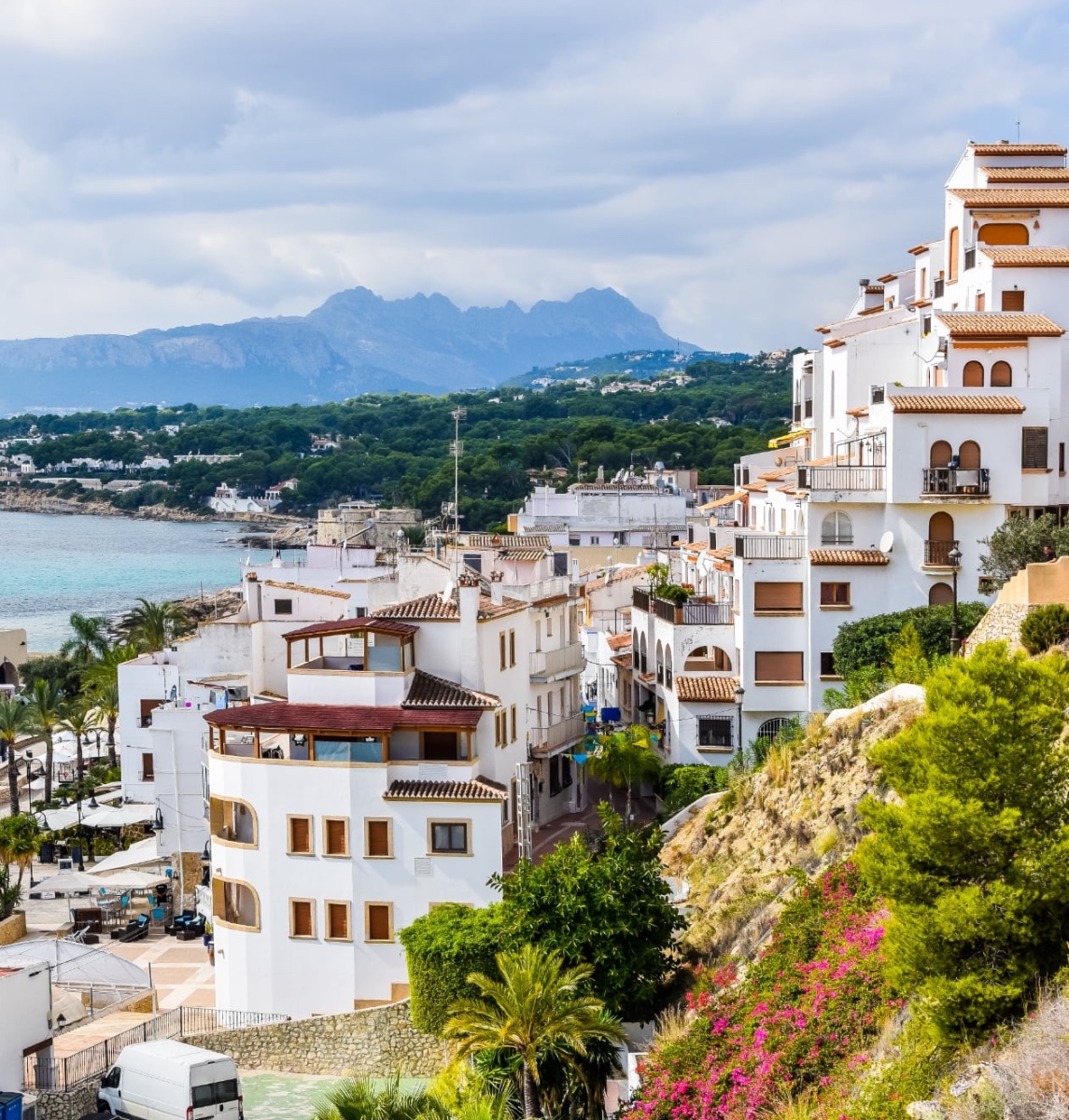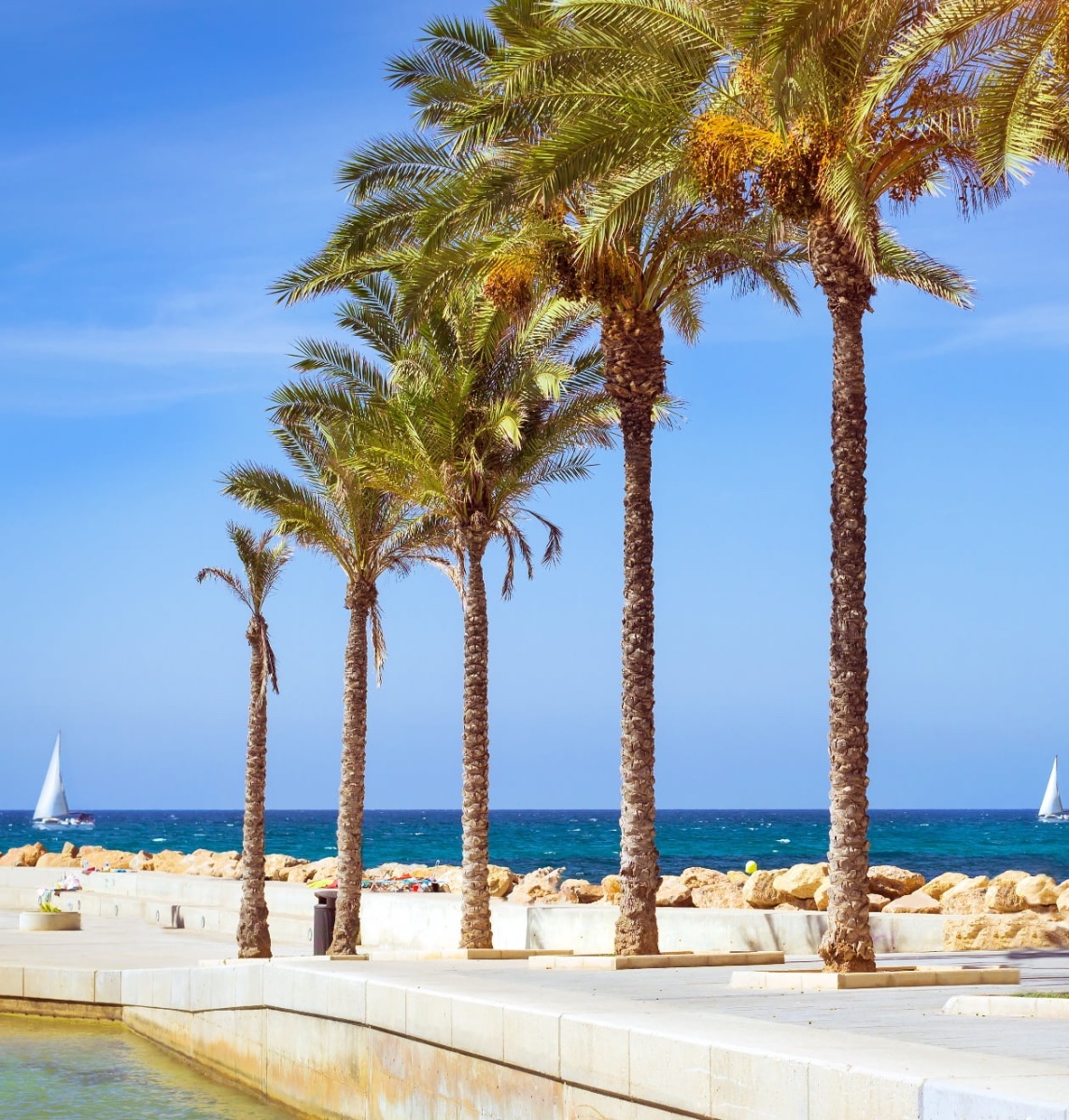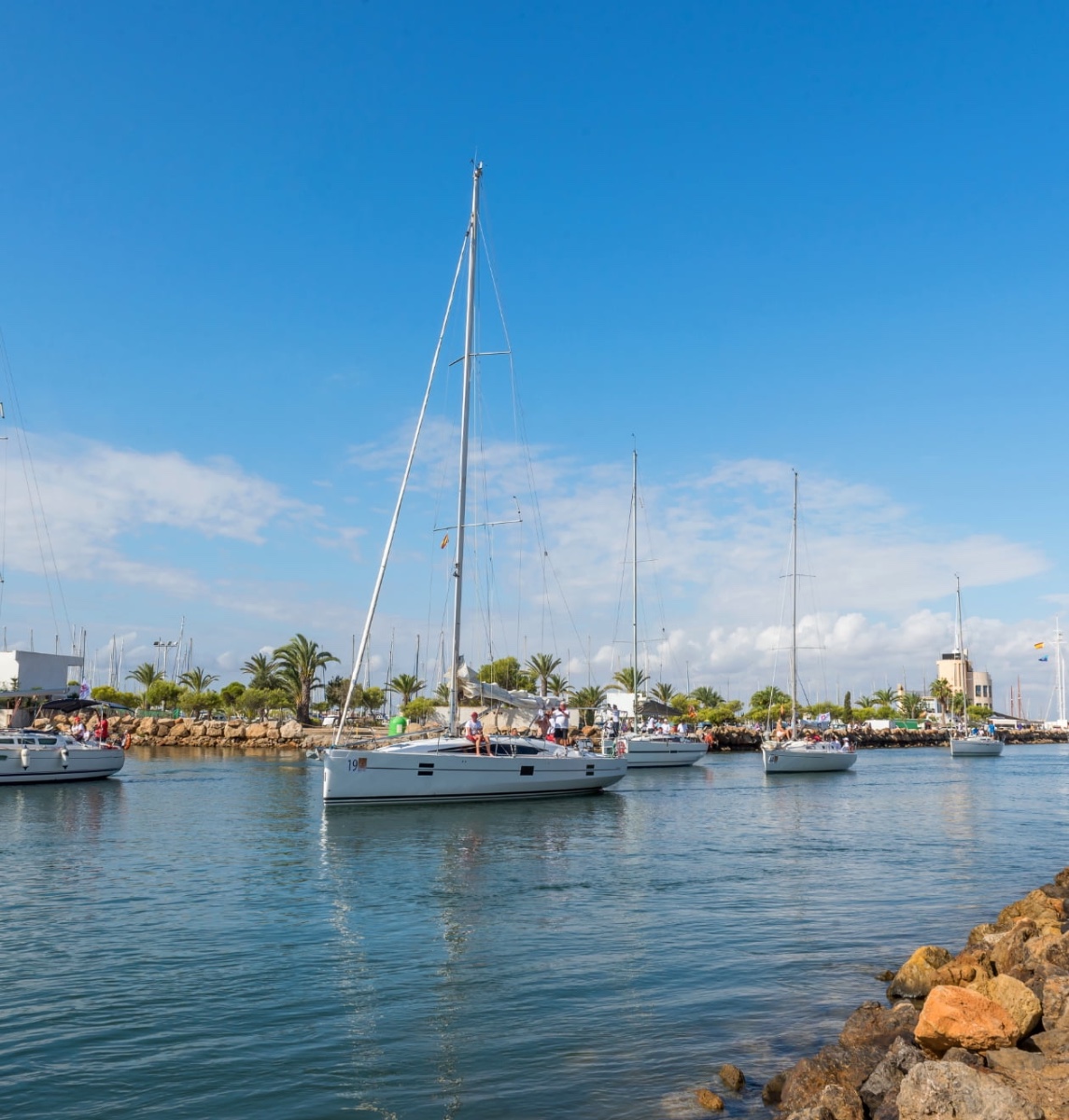Costa Blanca
The Costa Blanca is located approximately in the center of the east coast of Spain and is very popular for its excellent climate throughout the year, and for its kilometers of coastline full of beautiful virgin beaches. There is a great variety and each place offers different things for all tastes.
Due to the size of the region, it is divided into two parts, the north and the south of the Costa Blanca.
Costa Blanca North
- North of Alicante airport
- Much greener than the Costa Blanca South
- Mountainous, with hidden coves
- Large tourist centers such as Benidorm and Calpe
The north coast of the Costa Blanca starts around Gandía, and then passes south through Oliva and then Ondara.
This area is full of orange trees and majestic mountains in the background.
The sandy beaches are excellent and not overcrowded.
The interior is beautiful with Jativa, a nice town with a beautiful castle and Villalonga.
Along the coast you reach Denia, which has a marina and a port from where you can take a ferry to Ibiza and Mallorca.
Here, the coast goes from being flat to being rugged, with coves and rocky beaches.
Inland is the Orba Valley, with towns such as Orba and Benidoleig.
To the south of Denia is Javea, with its sandy beaches, followed by Moraira, a smaller town known for its beautiful views and friendly atmosphere.

Teulada is inland from Moraira, as is the town of Benissa, whose rolling hills stretch to the coast with beaches and rocky coves. Next, continue to Calpe, one of the most famous tourist destinations on the Costa Blanca.
Calpe, originally a small fishing village, is now a busy city with high-rise hotels and tower blocks dominating the skyline. Calpe has the famous Peñón de Ifach, which emerges from the sea. On both sides there are two fantastic and wide sandy beaches.
On the way south we pass through elegant Altea, with its hills full of pristine whitewashed houses, winding cobbled streets and designer shops. Then we arrive at Alfaz del Pi (also known as L'Alfas del Pi) with the Albir beach area and then Benidorm, the largest tourist center on the Costa Blanca. Benidorm is huge with masses of tall skyscrapers. Levante and Poniente beaches are excellent and the nightlife is legendary.
There are plenty of hotels, cafes, entertainment, shopping and a number of good family theme parks like Terra Mitica, Aqualandia and Aqua Natura. You can also take a boat trip to Benidorm Island, a small uninhabited island ideal for snorkeling.
After Benidorm, the coast becomes flat with kilometers of sandy beaches. The mountains in the background begin to fade more and more.
From Benidorm you can make an excursion to the interior, to La Nucía, Polop or to the castle of Guadalest, which is a recognized tourist attraction on the Costa Blanca. The Algar waterfalls are also a very famous tourist attraction where you can bathe in its crystal clear waters.
Costa Blanca South
- South of Alicante airport
- Much flatter and drier than the North Costa Blanca
- Best beaches
- Best golf courses
- Large tourist centers like Torrevieja
The south of the Costa Blanca is mostly flat, with fine sandy beaches, palm trees and salt lakes.
The south is much drier and more typical than a person who has never visited Spain would expect to see.
It is highly urbanized, relatively featureless and, in many tourist centers, more international than Spanish.
The main expat populations are in Villamartin, Cabo Roig, Rojales, La Zenia and Campoamor.
Alicante airport is where most people arrive on the Costa Blanca. It is a charming city, it has a great marina, beaches and the Castle of Santa Bárbara. Interestingly, most people immediately leave the airport and head south towards Torrevieja or north towards Benidorm.

In the centre of Alicante the road heads towards Madrid, in this area there are many old cities and towns, many of them with castles located on the hills, such as Sax, Monforte del Cid and Aspe. Further south from Alicante are cities of note such as Elche (or Elx) famous for its many palm trees, historic Orihuela, Crevillente famous for carpet making, Almoradi, Dolores, Algorfa, Benejuzar,..
There are also numerous coastal resorts such as Santa Pola with miles of beautiful sandy beaches. From Santa Pola you can take the ferry to the small island of Tabarca, once used by pirates this is the perfect place to dive. In this area are the famous golf resorts such as La Marquesa golf and La Finca golf. It is also close to well-known towns such as Benijofar, Daya Nueva and Rojales.
Back to the coast, we arrive at Torrevieja with its multiple sandy beaches and the salty lagoons that surround it; the Laguna Salada de la Mata and the Laguna Salada de Torrevieja. In this area you will find a good number of golf courses. The most famous are the Royal Campoamor golf course, the Las Ramblas golf course and the Villamartin golf course.
In the south of Torrevieja there are more beach resorts, such as Los Altos, Punta Prima, Playa Flamenca, La Zenia, Cabo Roig, Dehesa de Campoamor and Mil Palmeras. The town of Pilar de la Horadada is slightly away from the coast, but there are beautiful beach areas such as Torre de la Horadada. Visitors to the Costa Blanca South will find it less picturesque than the Costa Blanca North, but there are more tourist activities.
Costa Cálida
- East of Corvera airport (Murcia)
- Much flatter and drier than the North Costa Blanca
- Child-friendly beaches
- More sports facilities
- Large tourist centers like San Javier
The Costa Cálida is a long coastline in the Murcia region of southern Spain, stretching from south of Pilar de la Horadada to south of the coastal town of Águilas.
The Costa Cálida is known for its good climate, its beautiful beaches, the Mar Menor and the abundance of golf courses, of which La Manga is the most famous.
The best place for families with young children on the Costa Cálida is the Mar Menor.
This lagoon is calm and quite shallow, as well as being a few degrees warmer than the neighboring Mediterranean Sea.
The most famous towns around the Mar Menor are La Manga del Mar Menor, Cabo de Palos, Águilas, Mazarrón, Cartagena.

It is also ideal for practicing all kinds of water sports. You can fully enjoy sailing, fishing, scuba diving, snorkeling, kiting and windsurfing. The most popular resorts on the Costa Cálida are San Pedro, which is located on the Mediterranean, while San Javier, Los Alcázares, Punta Brava, Islas Menores and Playa Honda are located inland from the Mar Menor.
On the La Manga Strip itself, which directly overlooks the Mediterranean Sea, are tourist complexes such as Manga Beach, La Manga del Mar Menor and Cabo Palos. Torre Pacheco, Balsicas and Fortuna are other places with a high concentration of expatriates.
Alicante airport, located to the north, is also an important gateway for tourists wishing to visit the Costa Cálida.











 Access agents
Access agents




